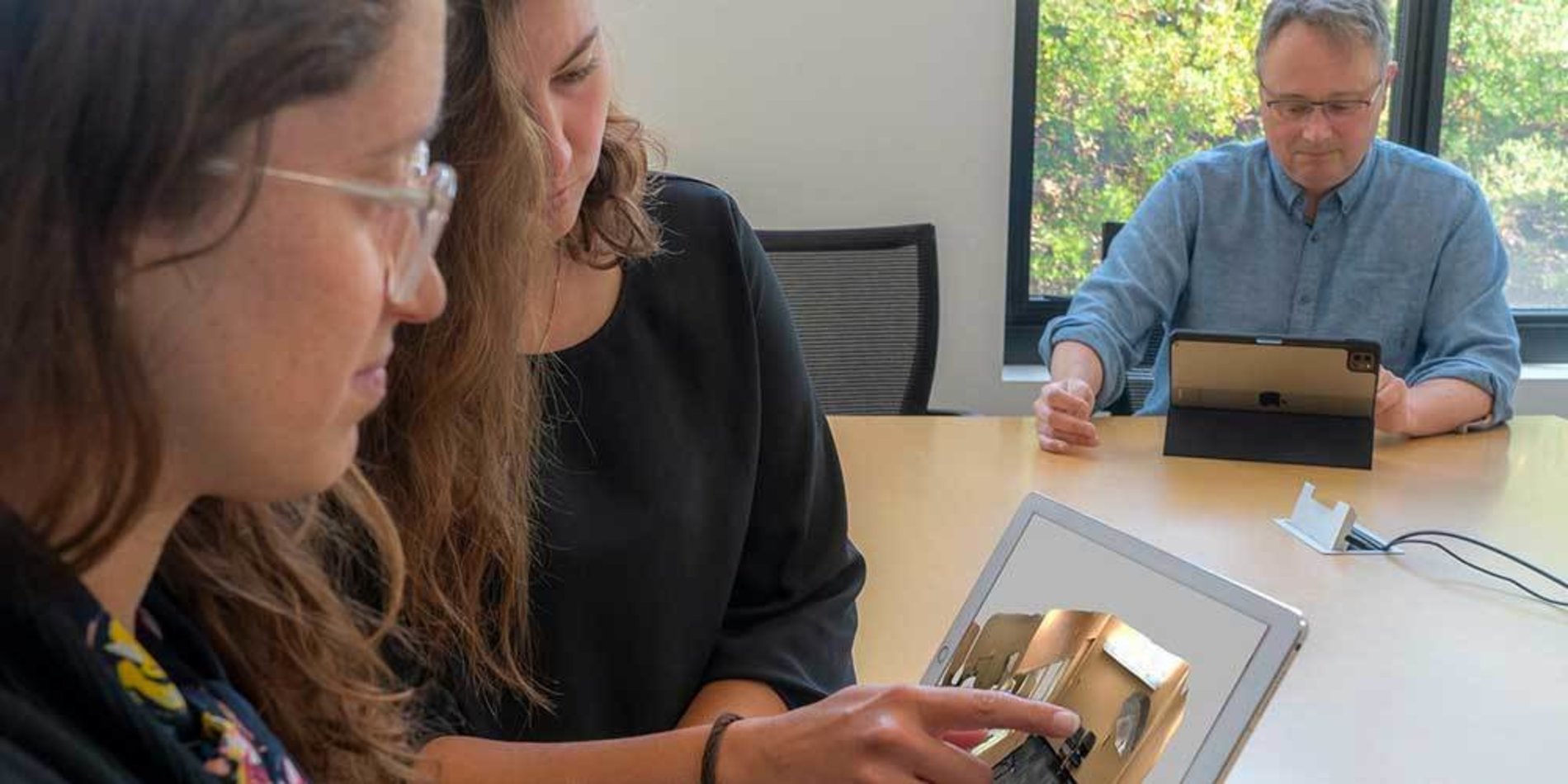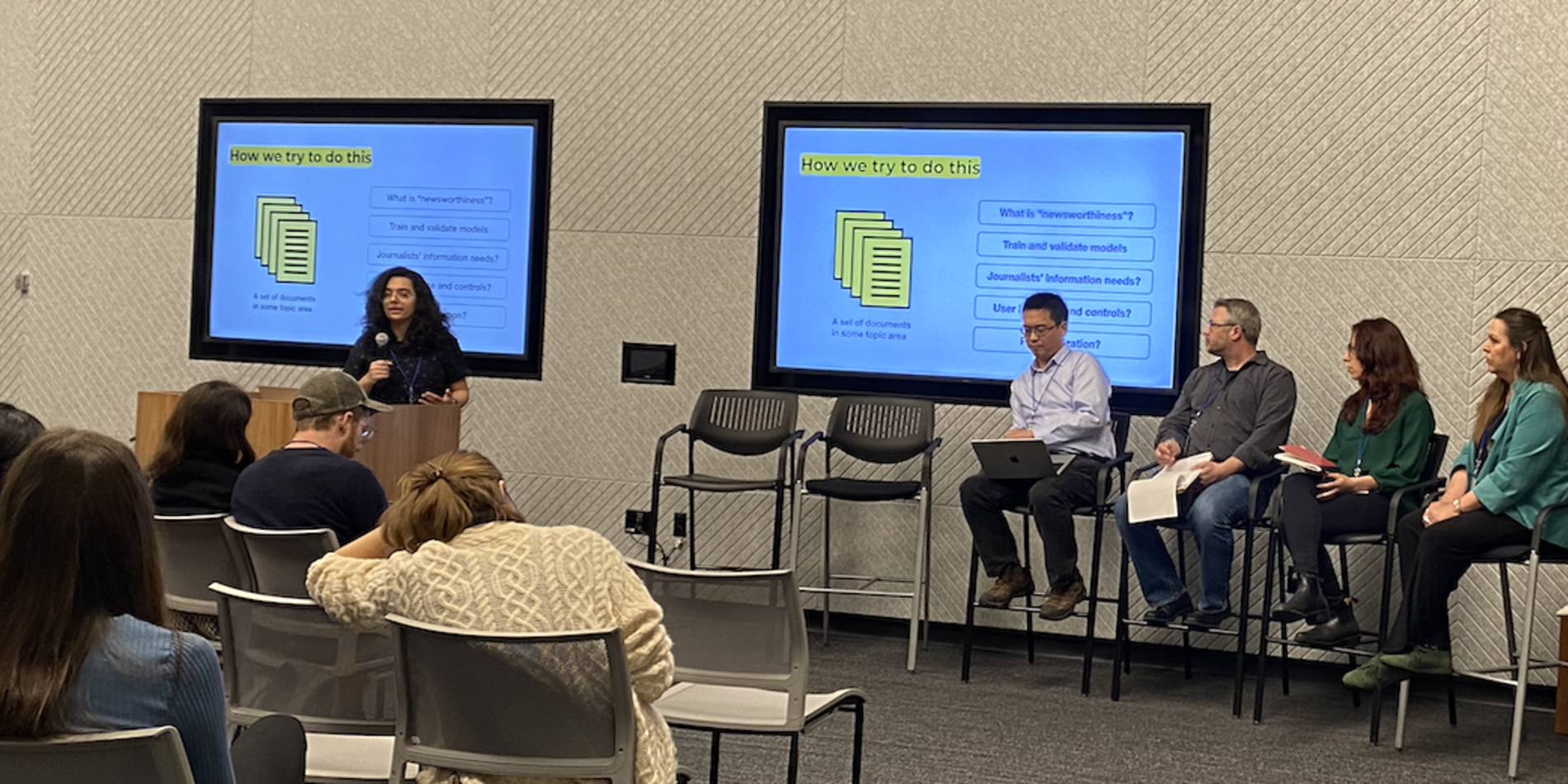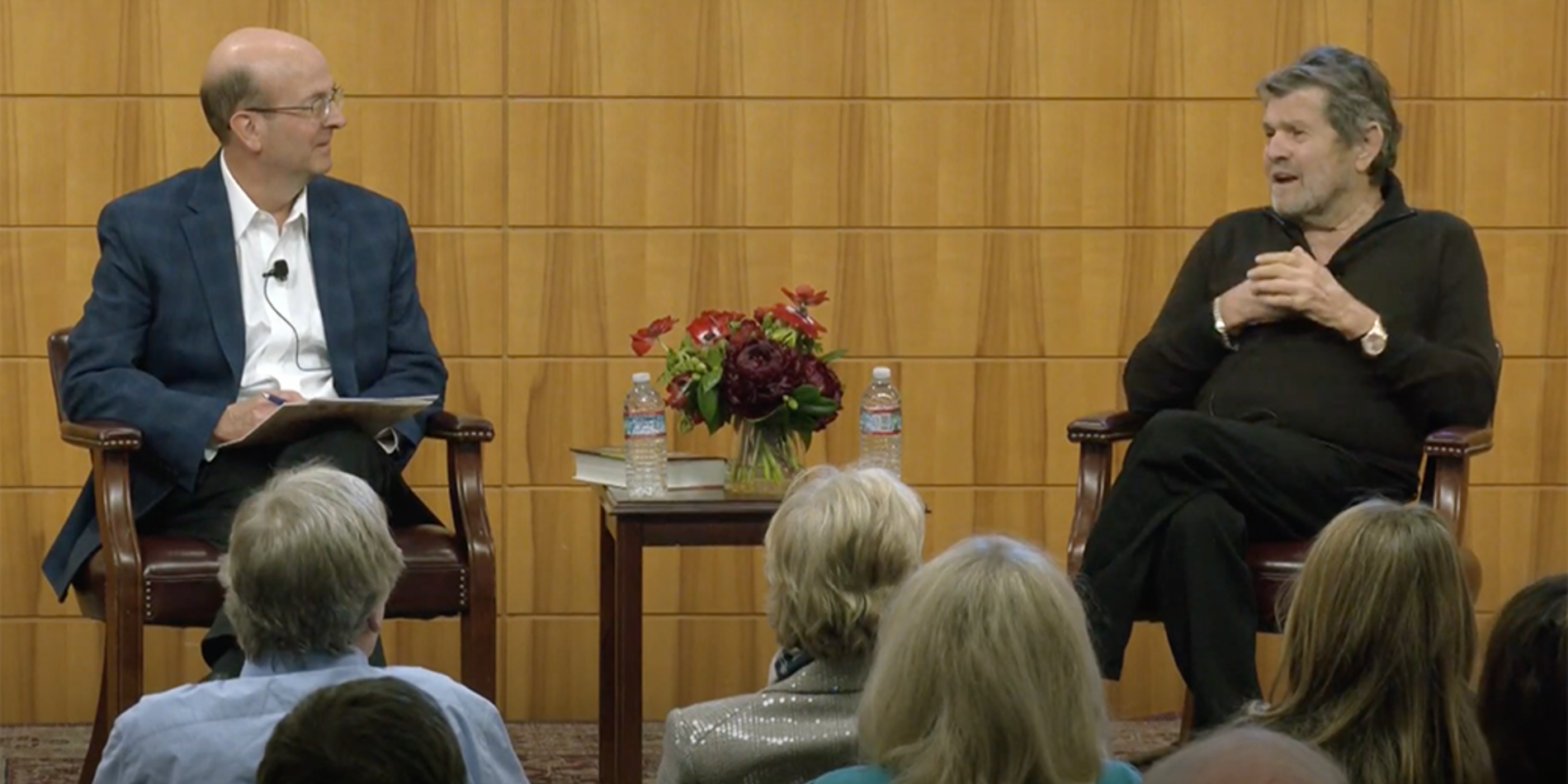Stanford Journalism alumni translate storytelling skills to impactful media careers
Aliyah Chavez says she has her dream job.
The newly installed anchor of Indian Country Today’s daily newscast, Chavez’s (MA 2019) journalism journey began at Stanford, where she took an introductory class with Carlos Kelly McClatchy Lecturer Janine Zacharia that got her hooked to storytelling.
“Never in my life had I been so excited to learn,” Chavez said. “It was just a class where I looked forward to going to lectures every single day. I loved my assignments.”
Chavez, who is a citizen of Kewa Pueblo, has posed important questions to public officials — including the White House and Interior Secretary Deb Haaland — and says she appreciates getting to report on Native communities today.
Many master’s graduates of the Stanford Journalism Program have translated their storytelling and multimedia skills from their learning experiences at Stanford to impactful newsroom and media roles all around the country and world — spanning from POLITICO to The New York Times to the Sacramento Bee.
“[Newsrooms] don’t want to know that you can just report and write,” said Zacharia, a longtime reporter on Israel, the Middle East and U.S. foreign policy. “You need to be able to edit in the Adobe Suite, shoot video and photos, know SQL, put data into an Excel spreadsheet — and maybe if you can do immersive VR, that’s an added bonus. Does every job require all those skills? No. But by coming to Stanford, you get all those skills, and it makes you more marketable in a competitive journalism job environment.”
In addition to its data focus, the Stanford Journalism Program’s nine-month master’s offerings include fundamental courses in beat reporting and multimedia storytelling, as well as more advanced classes in digital media production, narrative writing, sports reporting, foreign correspondence and virtual reality. Students are put through rigorous training, learning how to cover breaking news, pitching stories, interviewing newsmakers and publishing both written and multimedia work on the program’s Peninsula Press local news website.
Students also gain access to the faculty’s industry connections, as well as the Rebele Journalism Internship Program, which provides internship stipends for working at qualifying news organizations.
Danielle Echeverria (MA 2021) recently started as an engagement and breaking news reporter at the San Francisco Chronicle. Originally from California’s Central Valley, Echeverria reports in Northern California using her skills in everything from data reporting to photography in her day-to-day work.
“I’m not exaggerating when I say, [the program] really changed my life — like it truly did.” Echeverria said. “It’s where I learned how to be a journalist … really understanding how to report and how to do it with a lot of thoughtfulness and empathy.”

Gillian Brassil (MA 2019) applied her expertise as a synchronized swimmer at Stanford to her master’s project which wove data with immersive multimedia. The project focused on the prevalence of concussions in her sport, analyzing 420 swimmers’ experiences and producing a 360-degree video that immersed viewers in the water to demonstrate the risks. The New York Times — where Gillian worked as a reporting fellow on the sports desk — published the story.
Brassil now works for McClatchy in Washington, D.C., where she corresponds for the company’s five California newspapers, including the Sacramento Bee and Fresno Bee. She covers the California delegation and issues that impact the state, ranging from wildfires to opioids to abortion. Brassil credits her experiences in the program and having the support system from her professors as key to landing where she is today.
“They really made me a well-rounded journalist,” Brassil said. “Professors are a call away if we need anything. Their insight is always tremendous, and I still rely on their expertise.”
That’s a common theme among Stanford Journalism alumni, who are part of cohorts each year that are limited to only 15-20 students. That allows faculty to provide one-on-one editing support and career mentorship throughout the program — and remain mentors a phone call away for years that follow.
“In my undergrad experience, I was in lecture halls with probably like 300-400 people,” said Thomas Magloña II (MA 2021). “Going into graduate school, I wanted to be able to focus and I wanted my professors to be able to focus on me, too.”
Magloña is now a correspondent for Guam-based KUAM News, where he’s been tasked with expanding the newsroom’s coverage to the Northern Mariana Islands, a place he grew up. He’s finding learnings from Zacharia’s foreign correspondence course applicable to his work today.
“This is U.S. territory, but I learned how framing is important,” Magloña said. “The scope in which you tell your story is important — and being able to do that here at home on a regional level has been really helpful, too.”
Magloña came into the journalism program with prior video experience, but he says Stanford expanded his exposure to emerging tools like virtual reality and drones.

In addition to core multimedia skills in photography, video and audio, Hearst Professional in Residence Geri Migielicz teaches courses that explore virtual reality and augmented reality applications for storytelling. Migielicz, who previously worked at the San Jose Mercury News, says she instills in students how to find the best tool to tell a specific story.
“It’s teaching them a way of … integrating that [mindset] into their reporting from the inception — starting to think about the possibilities and what’s the best way to tell this story,” Migielicz said. “Being at a place like Stanford where we’re continuing to probe the possibilities of these new mediums is really unique.”
Stanford’s location in the heart of Silicon Valley has also allowed students to gain expertise outside journalism while they’re on campus. In addition to major technology, political and media figures coming through Stanford for speeches and events, students also can take classes outside the communication department.
“If you want to be an environmental reporter, think of the expertise at Stanford in areas of clean energy, sustainability and the environment,” said R.B. Brenner, a lecturer in the journalism program and managing director of the Stanford Journalism and Democracy Initiative. “If you want to be a reporter focused on health care, you have access to courses about medicine, science, health, biology. Any area you choose, Stanford has some of the leading experts in the world about it.”
The interdisciplinary culture at Stanford is something that drew McArdle Hankin (MA 2020) to the journalism program. Hankin had previously worked in tech — including at Google — but realized he wanted to pivot to journalism. “I knew that I wanted to do something that had positive externalities, or sort of a benefit to society.”
For years, Hankin had been concurrently running live storytelling events through his company, Back Pocket Media. At Stanford, Hankin says he was able to learn core journalism skills to build his business, as well as take classes in social science, the business school and the Stanford d.school. He soon incubated his company work at the Brown Institute for Media Innovation — a collaboration between Stanford and Columbia University — and his company today hosts regular live storytelling events with local newsrooms that allow a journalist to tell the story behind the story.

“I don’t think that my company would be where it is had I not gone to Stanford. It unlocked a ton of opportunity,” Hankin said. “It really made the barrier to entry for me into the journalism world a lot lower, and it helped me accelerate the growth of our company.”
The Stanford Journalism Program is housed in the same building as other innovative campus entities, including the Stanford Virtual Human Interaction Lab and the John S. Knight Journalism Fellowships, which faculty and students can collaborate with.
“We’re the opposite about just saying: ‘This is the way things were done in the good old days, and this is journalism,’” said Brenner, who previously worked at The Washington Post. “We’re all relentlessly aware of the importance of journalism continuing to evolve, change, innovate — particularly by technology. There’s an entrepreneurial focus on not only not being afraid of the future, but being the ones who are going to help shape it.”



